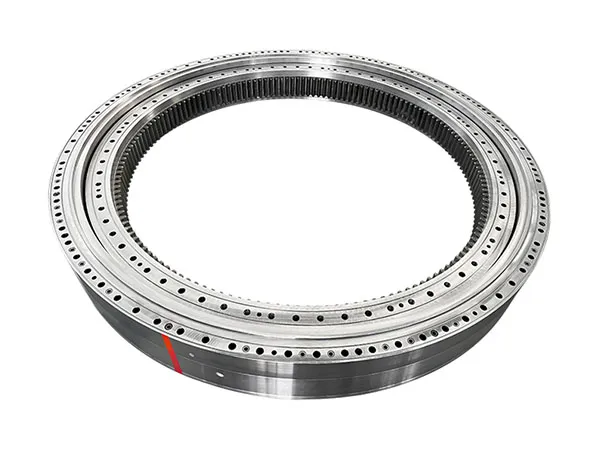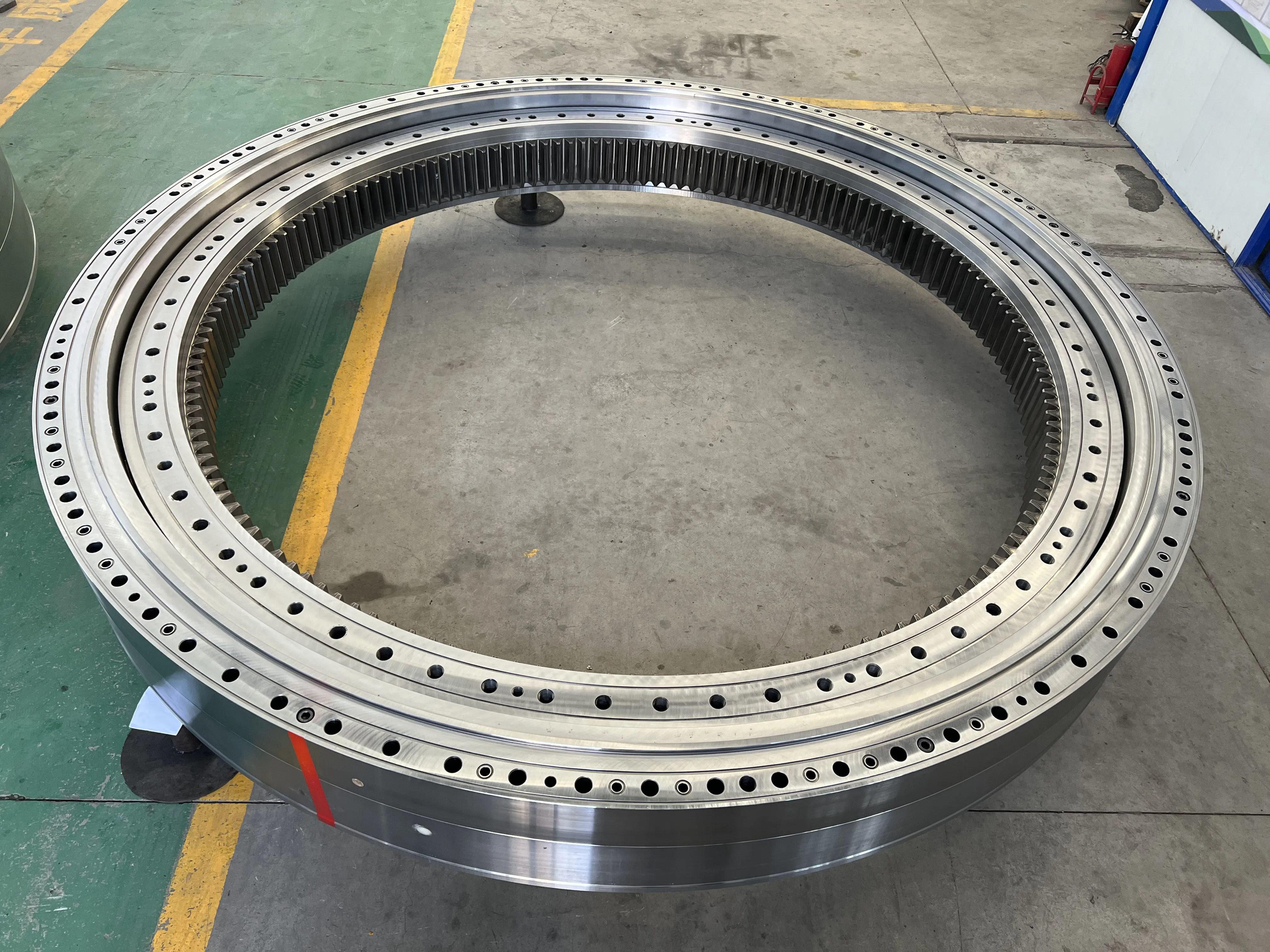Slewing Bearing Installation Guide
A slewing bearing (or slewing ring) is a type of large bearing designed to accommodate slow-turning or oscillating loads. These bearings are commonly used in applications where the bearing needs to support heavy loads while allowing for rotational or partial rotational movement. They are characterized by their ability to manage radial, axial, and tilting moments simultaneously.Installing a slewing bearing requires precision and careful handling to ensure its proper functioning.
Slewing Bearing Installation Guide

1. Preparation:
Check the parts: Ensure all components, including the slewing bearing, bolts, and mounting structure, are clean and free of any damage or contamination.
Inspect the bearing: Look for signs of damage such as cracks, corrosion, or dirt. Clean the bearing if necessary.
Verify the flatness of the mounting surface: The mounting structure for the bearing should be flat, rigid, and free of distortions. Measure the flatness of the structure and compare it with the manufacturer’s specifications.
Prepare lifting tools: Due to the size and weight of slewing bearings, appropriate lifting equipment (e.g., a crane) should be prepared.
2. Mounting the Bearing:
Position the bearing: Use a crane or hoisting device to position the bearing on the mounting surface. Ensure that the bearing is handled carefully to avoid any impact or stress.
Align the bolt holes: Rotate the bearing carefully so that the bolt holes in the bearing match the bolt holes on the mounting structure.
Tighten bolts in stages: Insert all the bolts but do not tighten them fully at first. Tighten them in three stages to ensure uniform pressure:
First stage: Tighten bolts to 30-50% of the final torque value.
Second stage: Tighten bolts to 70-80% of the final torque.
Third stage: Tighten bolts to 100% of the specified torque value.
Cross-pattern tightening: Tighten the bolts in a criss-cross or star pattern to ensure even distribution of forces on the bearing.

3. Lubrication:
Initial greasing: Most slewing bearings require lubrication before operation. Use the grease recommended by the manufacturer and fill the grease points (nipples) until fresh grease starts coming out from the seals.
Verify the seals: Check that the seals are intact and properly placed to prevent contamination.
4. Checking Clearance and Rotation:
Measure the backlash: Check the rotational clearance (backlash) of the bearing to ensure it meets the manufacturer’s specifications. Rotate the bearing to ensure smooth and consistent movement.
…
For more detailed information on slewing bearing installation, please click here: https://www.mcslewingbearings.com/en/a/news/slewing-bearing-installation.html


